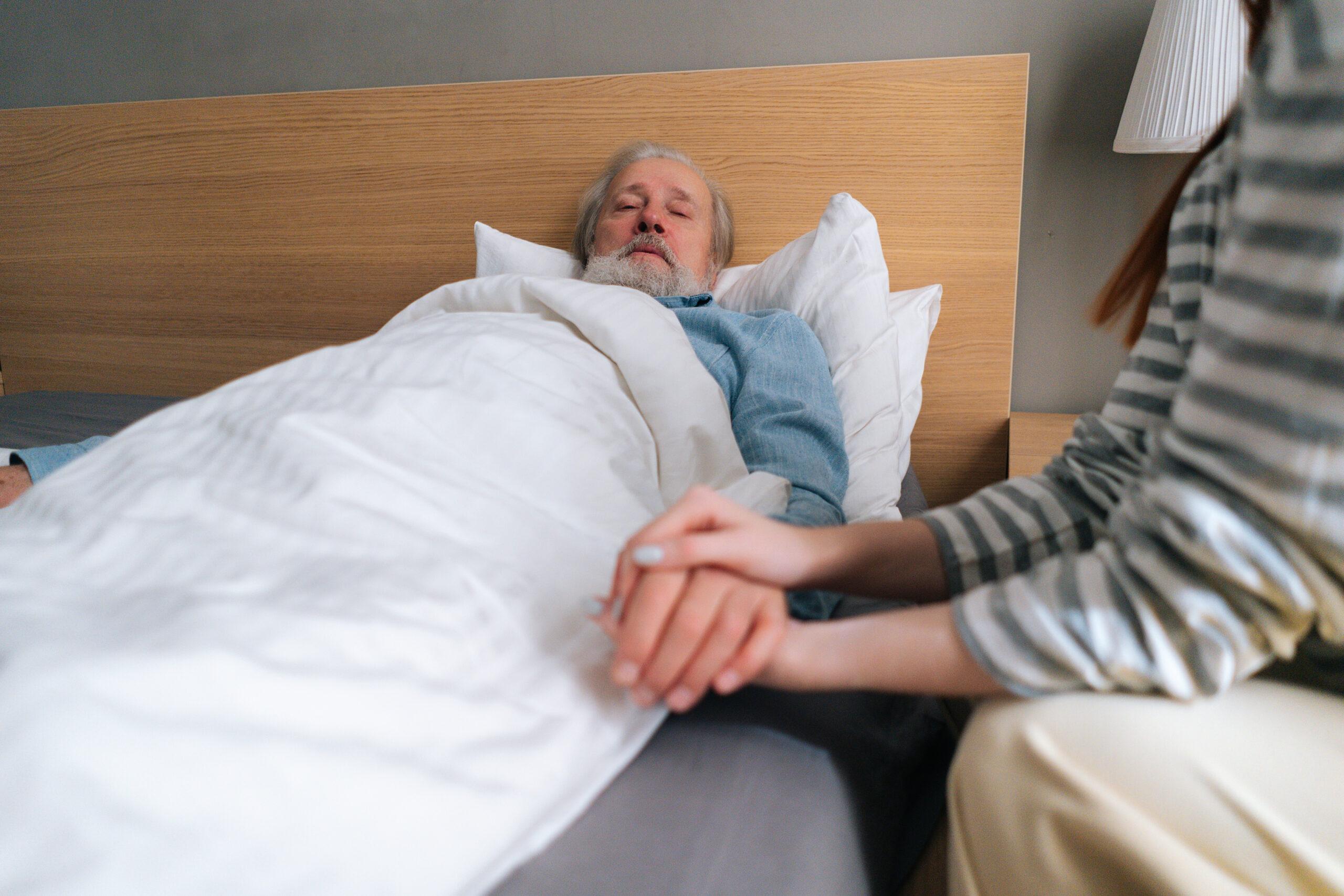Decreased Level of Responsiveness During the Dying Process
A patient near the end of life may experience heightened drowsiness or increased sleep. It can become increasingly challenging to communicate with or arouse the patient, as they may appear unresponsive or uncommunicative. A patient’s transition from spending most of their time sleeping to diminished consciousness and eventually coma is a common occurrence in the dying process.

Communication with Unresponsive Hospice Patients
It’s essential to remember that even if a hospice patient seems unresponsive, their hearing might still be intact. Hearing is often one of the last senses to be lost and can be present even when a patient is semi-conscious. To effectively communicate with patients who may appear unresponsive, consider the following guidelines for family members and hospice professionals:
- Do not speak in the patient’s presence as if they were not there.
- Continue to talk to the patient as though they could physically respond, even when their consciousness diminishes.
- Speak to the patient during physical care and procedures.
- Inform the patient of a visitor’s presence, who they are, and what they will do.

CONTINUA LEARNING
Simplify Your Hospice Team’s Training and Skill Building
A complete solution for your agency: more than 125 hospice courses, caregiver in-services, training plans, and more.
The Importance of Presence for Unresponsive Hospice Patients
Simply being present is crucial for non-responsive patients. Sitting quietly with patients, speaking softly to them, and gently touching them can provide immense comfort to those actively dying. This simple presence assures them they are not alone in their final journey.

Pain Management for Unresponsive End-of-Life Patients
Pain medications should be continued even when a hospice patient is unresponsive. Family members and caregivers may wonder, “Why are we still giving pain medications? Is the patient in pain in this coma?” It is vital to educate family members and caregivers about the continuation of pain medication when the patient is unresponsive.
Pain medications should not be withheld during this time – they may be adjusted or reduced, but maintaining patient comfort is still the goal. When a hospice patient is non-responsive, assessing the presence of pain becomes increasingly difficult. There are no guarantees that the patient would be comfortable if the medication were discontinued. Discontinuing pain medications could result in withdrawal symptoms and an uncomfortable death.
Prepare Your Hospice Care Team
Understanding the experiences and needs of unresponsive hospice patients at the end of life is essential for providing the best possible care. With the right communication techniques, a comforting presence, and proper pain management, patients and their families can navigate this challenging time with greater ease and support.
Consider hospice training courses online for your hospice team to practice and learn these hospice care skills. Courses are flexible and self-paced and cover a range of skills, including symptom management, end-of-life care, and communication with patients and their families.
